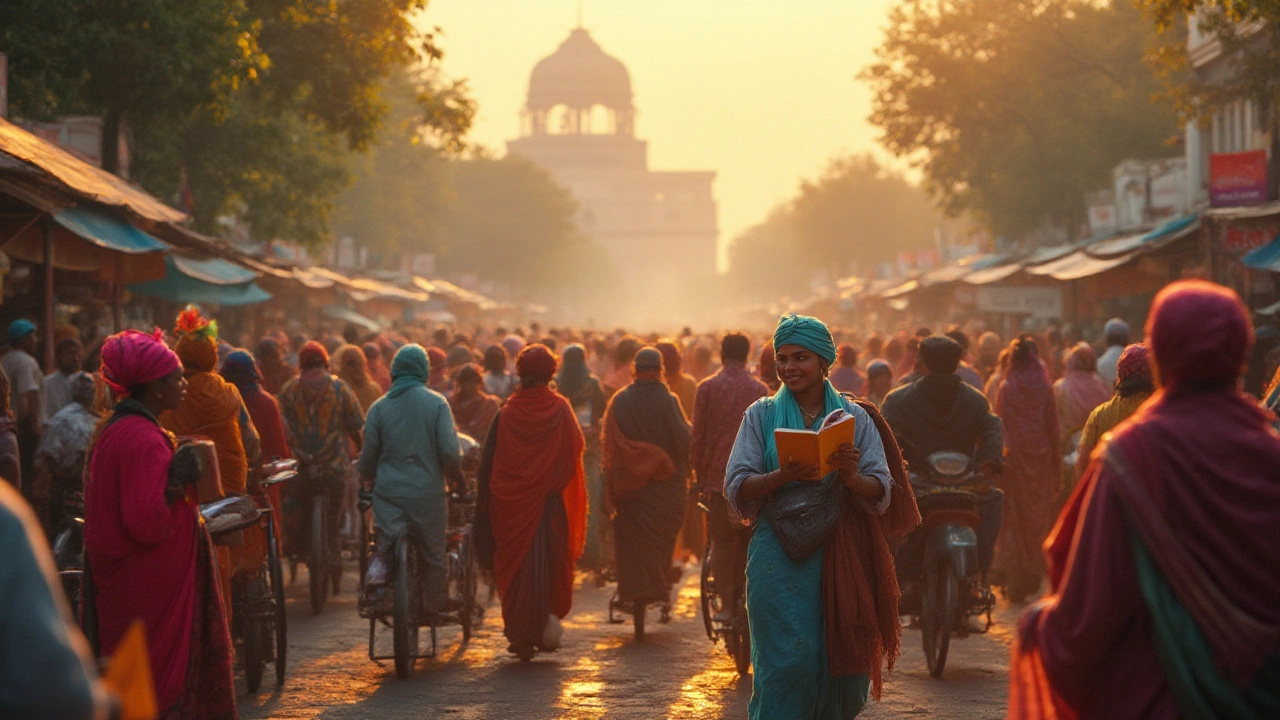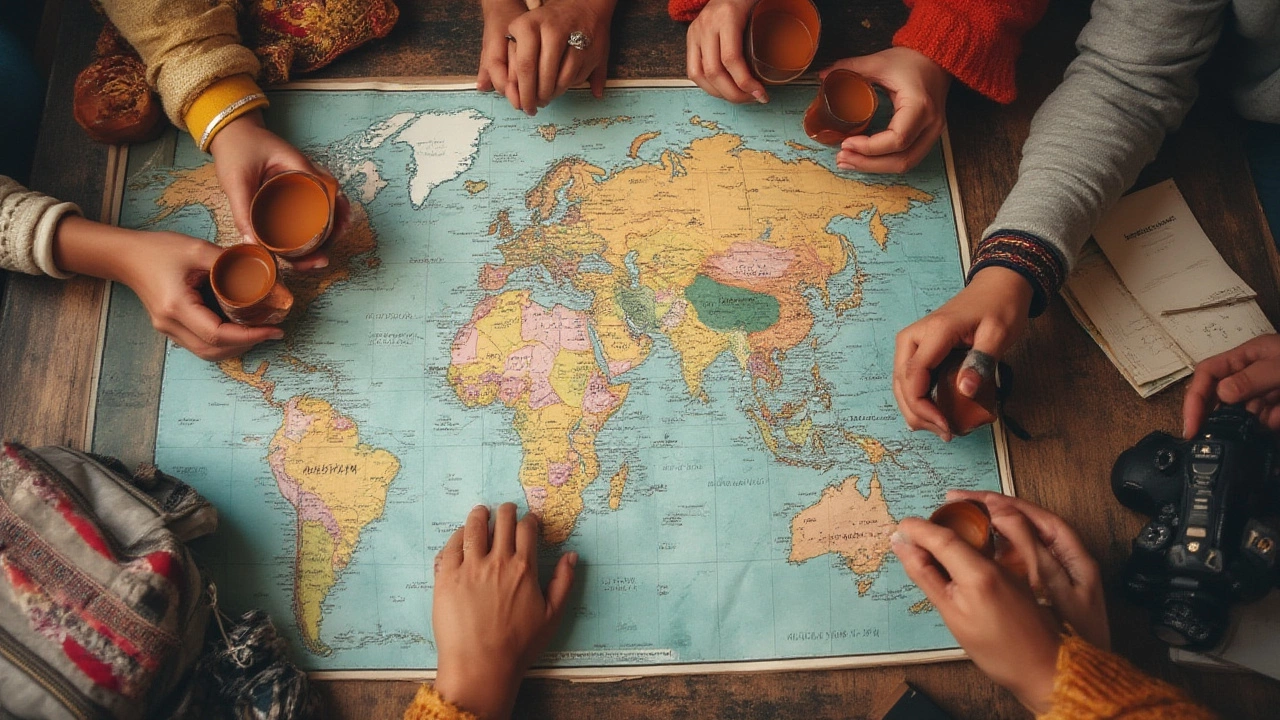Epic Guide to Planning an Unforgettable India Trip: Itinerary, Tips & Regional Highlights
 Jul, 31 2025
Jul, 31 2025
Try wrapping your head around this: India isn't just a country—it's a whole world packed into one nation. You’ve got snow-capped Himalayas, palm-lined beaches, wild national parks bursting with tigers, frenetic cities that never seem to sleep, soul-soothing temples, and food that zings your taste buds in every possible direction. The catch? Even if you had a year, you’d barely scratch the surface. But planning a trip to see as much of India as you can without burning out (or blowing up your budget) isn’t just for the well-traveled or the super-rich. Even while I’m wrangling the chaos of daily life with Aria and Felix, I’ve figured out tips that really work—no travel agent or endless Google searches required. India’s not a country you just wing it in either; a little planning makes the difference between the best holiday of your life and a logistical headache. Ready for an honest, practical playbook?
Mapping Out Your Route: Where to Begin and What to Prioritize
First reality: you can't see it all. India's huge—over 3.2 million square kilometers. There are 28 states, more than 120 languages, and each region feels like a separate mini-universe. So, the question is not "What to see?" but "What matters most to your personal India experience?" Is it the postcard-perfect Taj Mahal, wild elephants in Kerala, the buzzing madness of Mumbai, or trekking to mountain monasteries in Ladakh? I always start by grabbing a big paper map and circling what feels like a must-see for everyone traveling—kids loved spotting tigers in Ranthambore, my wife wanted Jaipur’s colorful chaos, and I refused to skip the ghats of Varanasi. Prioritizing is hard but necessary.
Some regions naturally cluster together. The classic "Golden Triangle" (Delhi-Agra-Jaipur) bundles ancient forts, the Taj Mahal, and bustling bazaars—all within a day’s drive of each other. The South, with its lush Kerala backwaters, spice plantations, and old Portuguese forts in Goa, offers a totally different vibe—laid-back, tropical, and super family-friendly. Mountains your thing? Head north towards Himachal Pradesh, Uttarakhand, or even all the way to Ladakh. India’s train network, the 4th largest in the world, can link many of these hotspots, but don’t underestimate travel time—just because two places look close on the map doesn’t mean it’s a quick ride. Sometimes a 200 km journey takes half a day thanks to winding roads or train schedules that run on “Indian Standard Time.”
Here’s what helped us: dividing the trip into regional “legs,” spending enough days in each to actually soak it in rather than race from place to place. For instance:
- North India: Delhi, Agra, Jaipur, Varanasi, Amritsar
- West India: Mumbai, Goa, Gujarat (Gir National Park for lions)
- South India: Kerala, Karnataka, Tamil Nadu, coastal Andhra
- East and Northeast: Kolkata, Darjeeling, Assam (Kaziranga National Park for rhinos), Meghalaya
- Mountains: Himachal, Uttarakhand, Ladakh-Srinagar circuit
Travel distances and times can be wild compared to Europe or the US. Here’s a quick table to give you a real sense of how long things might take, even by fast train or flight:
| Route | Distance (km) | Travel Time by Train | By Flight |
|---|---|---|---|
| Delhi to Agra | 230 | 2-3 hours | 1 hour (direct) |
| Delhi to Varanasi | 820 | 12-15 hours | 1.25 hours (direct) |
| Mumbai to Goa | 590 | 8-10 hours | 1 hour (direct) |
| Bangalore to Kochi (Cochin) | 550 | 9-12 hours | 1.25 hours (direct) |
| Kolkata to Darjeeling | 620 | 8-10 hours (plus road up mountain) | 1 hour (to Bagdogra, then 3-hour drive) |
Start broad, then pick a handful of “anchors”—places you absolutely can’t leave out. If you’re traveling with kids, factor in downtime and breaks—India’s climate, crowds, and noise require you to adjust your pace. My rule: never go more than three days in a row without a slower “rest” day, whether that’s poolside in Goa or a cozy guesthouse in the hills.
Best Time to Visit: Weather, Festivals, and Avoiding the Crunch
This one’s a dealbreaker. The same city can feel charming or unbearable depending on the season. India’s weather reads like a buffet: tropical in the south, cold in the far north, desert-hot in Rajasthan. Peak tourist season is winter (November to March), when most places are cooler and relatively dry. Here’s a simple breakdown to keep you sane as you pick your dates:
- Winter (November - February): North India is crisp, sometimes foggy—a scarf-and-sweater situation. Rajasthan, Delhi, Varanasi, and Agra are at their prime, with day temps around 10–25°C (50–77°F). In the south (Kerala, Tamil Nadu, Goa), it’s warm and breezy, perfect for beaches and backwaters.
- Summer (March - June): Expect blazing heat—Delhi and Rajasthan often hit 40°C (104°F). Hill stations like Shimla, Manali, or Ooty are cool escapes. Families flock to the mountains this time. Some wildlife parks close May–June as animals retreat from the heat.
- Monsoon (June - September): Rains drench most of the country, greening everything up but making travel less predictable. Kerala is famous for its lush monsoon beauty—but trains and buses sometimes stop for flooding, and leeches are a thing if you’re hiking. North and Northwest India starts to dry up by September.
Festivals can be pure magic or pure madness—sometimes both! Diwali (lights), Holi (color powder fights), and Pushkar Camel Fair are wild, positive chaos but cause crowds and price spikes. Booking trains, hotels, and flights at least 2-3 months ahead is smart, especially during school holidays—both Indian and international.
Here’s a quick weather and festival snapshot to help you avoid surprises:
| Region | Peak Season | Must-See Festivals | Hot/Stormy Season |
|---|---|---|---|
| North | Nov-Mar | Diwali (Oct-Nov), Holi (Feb-Mar) | May-Jun (hot), Jul-Sep (monsoon) |
| South | Dec-Mar | Pongal (Jan), Onam (Aug-Sept) | Apr-May (humid), Jun-Sep (monsoon) |
| West | Nov-Feb | Ganesh Chaturthi (Aug/Sept), Goa Carnival (Feb) | Apr-May (hot), Jun-Sep (rain) |
| East | Oct-Mar | Durga Puja (Oct), Bihu (Jan/Apr) | Apr-Jun (humid), Jun-Sep (wet) |
If you’re not locked to school holidays, shoulder season (late September or early April) can be a great sweet spot. Mild weather, lower prices, and fewer crowds—not to mention the chance to actually talk to locals who aren’t buried under a tourist pileup.

Budgeting, Transport, and Accommodation: How to Travel Smart in India
Here’s where most people mess things up: India is far cheaper than Europe or the US, but costs can add up if you bounce between flights, private drivers, and luxury hotels all the way. At the same time, under-budgeting can seriously kill your fun. The country has something for everyone—think $10 hostels up to palace hotels that cost more than my monthly mortgage. It’s the classic case where you get what you pay for, but with a little clever planning you can snag real value.
First, know your style. If you want backpacking on a shoestring, plan around trains (booking tickets through IRCTC online, with an early reserve), government buses, and guesthouses. If you need comfort or are with kids, splurging for a private car and driver in Rajasthan or Kerala saves you endless hassle and lets you cover more ground at your own speed. Domestic flights are common now—India runs around 30 active commercial airlines. Even small cities have airports, and fares between major routes (like Delhi to Mumbai) can be as low as $40 if you book well ahead.
Booking trains is half-adventure, half-puzzle. The Indian Railways has over 13,000 trains a day, serving 23 million passengers. Book in advance—there’s a quota system. Families: look for AC 2-tier or 3-tier, which offer beds, curtains, and are much cleaner than sleeper class. E-tickets are available via IRCTC or apps like MakeMyTrip. Don’t expect luxury on every ride, but some trains—like the "Shatabdi" or "Rajdhani" express—are comfy, fast, and sometimes include meals. Overnight trains are perfect for covering big distances while saving a hotel night.
Here’s what our family typically spent (in USD, 2025 prices):
| Item | Budget Per Day | Midrange Per Day | Luxury Per Day |
|---|---|---|---|
| Accommodation | $10-30 | $50-100 | $200+ |
| Meals | $3-5 | $10-20 | $50+ |
| Transport (local/intercity) | $8-15 | $30-60 | $150+ |
| Entrance fees/tours | $5 | $10-25 | $60+ |
Accommodation options run the full spectrum—OYO rooms and Zostel are lifelines for budget travelers. Many decent hotels include breakfast, and upper midrange hotels sometimes spoil you with pools and really good beds (a gift for jet-lagged kids). Airbnbs are all over big cities and some hill stations. If you’re looking for something special, try a raj-era palace in Rajasthan or a tea estate bungalow in the south.
And do not forget an insider’s rule: always check recent reviews for hot water, WiFi, and...bedbugs. Learn to ask about "checkout time"—sometimes it’s as early as 10am. And keep a little cash for smaller merchants or tuk-tuk rides—credit cards only get you so far, even today.
// Smart Itineraries and Local Insights: Experience India Your Own Way
Everyone wants the "real" India, but what does that actually mean? Running between major monuments is fun for a week, but what actually sticks in your memory—and your kids’ memories—is eating chaats at street markets, seeing wedding processions dance down the street, or chatting with amiable rickshaw drivers who become your surprise guides. Here’s a sample two-week itinerary that covers the classics with some less-touristy gems:
- Days 1-3: Delhi – Explore the Red Fort, India Gate, Chandni Chowk (take a cycle rickshaw!), Humayun’s Tomb. Sample street food, but stick to busy stalls that cook in front of you—stomach insurance for the whole trip.
- Days 4-5: Agra & Taj Mahal – Visit at sunrise—way fewer crowds, magical light. Don’t miss Agra Fort or a quick trip to Fatehpur Sikri.
- Days 6-8: Jaipur – Amber Fort, Hawa Mahal, wander Bapu Bazaar. Try a block-print workshop. Kids love the Jantar Mantar observatory’s huge sundials.
- Days 9-11: Varanasi – The oldest living city—catch sunrise at the ghats, watch rituals by the river, take a boat ride. Prepare for sensory overload (worth it!).
- Days 12-14: Kerala – Chill out on an overnight houseboat in the backwaters, then hit a spice plantation tour or relax on Varkala Beach.
Plenty of families swap Varanasi or Kerala for Ladakh or Goa, depending on the season or adventure level. If you snag longer than two weeks, consider adding:
- Ranthambore National Park (Rajasthan) for tiger safaris
- Hampi’s ancient ruins (Karnataka) for something remote and wild
- Darjeeling for tea gardens, toy train rides, and views of Kanchenjunga
- Amritsar for the Golden Temple and legendary free communal meals
Some final pro tips? Plan India trip logistics ahead, but leave space for spontaneous discoveries—sometimes the most random chai stand gives you a story you tell for years. Get a local prepaid SIM card at the airport; Google Maps is a lifesaver in crowded city lanes. Always carry tissues, hand sanitizer, and a scarf or bandana—not just for temples, but for cover from sun and dust. Last little advice: learn a few Hindi words (namaste, dhanyavaad)—people love the effort, even if your accent’s hilarious. Every day is an adventure in India. The more heart and patience you show, the more magical it gets.